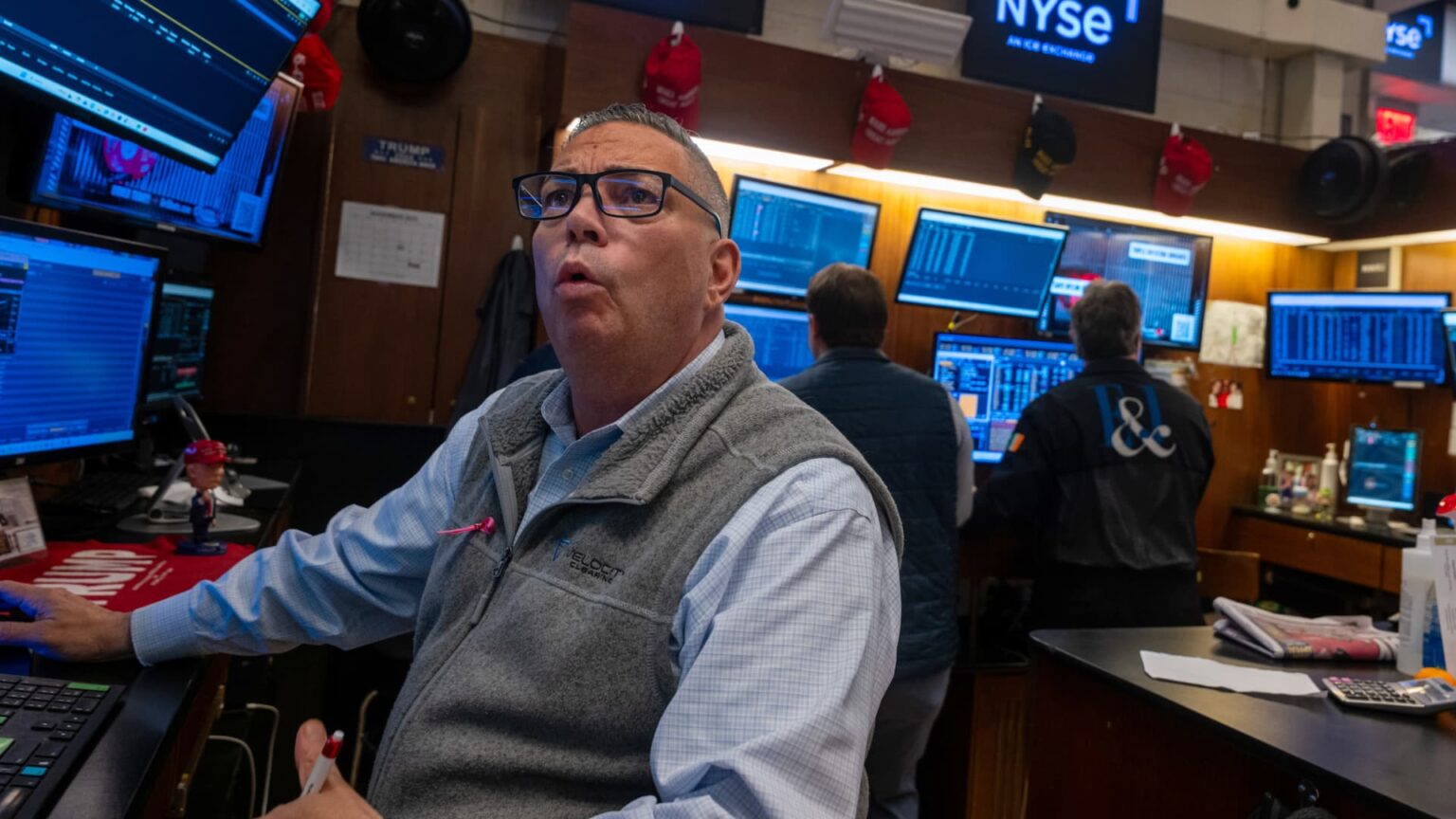Traders work on the floor of the New York Stock Exchange (NYSE) on Nov. 12, 2025 in New York City.
Spencer Platt | Getty Images
The divergence between the performance of the Dow Jones Industrial Average and Nasdaq Composite on Wednesday stateside reinforces the suggestion that there are two markets operating in the U.S.: one of an artificial intelligence and another of “everything else.”
Not only did the Dow rise, it also secured its second consecutive record high and closed above the 48,000 level for the first time.
The index, which comprises 30 blue-chip companies, is typically seen as a marker of the “old economy.” That is to say, it is mostly made up of large, well-established companies driving the U.S. economy, such as banks, healthcare and industrials, before Silicon Valley became a mini sun powering everything.
And it was those stocks — Goldman Sachs, Eli Lilly and Caterpillar — that lifted the Dow on Wednesday.
To be sure, new and flashy names, such as Nvidia and Salesforce, constitute the Dow too. But as the index is price-weighted, meaning that companies with higher share prices influence the Dow more, tech companies don’t exert as much gravity on it.
That’s in contrast to the Nasdaq, which is weighted by companies’ market capitalization, and dominated mainly by technology firms. The tech-heavy index fell as shares like Oracle and Palantir slipped — even Advanced Micro Devices’ 9% pop on its growth prospects couldn’t rescue the Nasdaq from the red.
It’s not necessarily a warning sign about overexuberance in AI.
“There’s nothing wrong, in our view, of kind of trimming back, taking some gains and re-diversifying across other spots in the equity markets,” said Josh Chastant, portfolio manager of public investments at GuideStone Fund.
But what investors would really like is if fork in the road merges into one. That tends to be the safer path to take.
What you need to know today
And finally…
People walk by the New York Stock Exchange (NYSE) on June 18, 2024 in New York City.
Spencer Platt | Getty Images
Why private equity is stuck with ‘zombie companies’ it can’t sell
Private equity firms are facing a new reality: a growing crop of companies that can neither thrive nor die, lingering in portfolios like the undead.
These so-called “zombie companies” refer to businesses that aren’t growing, barely generate enough cash to service debt and are unable to attract buyers even at a discount. They are usually trapped on a fund’s balance sheet beyond its expected holding period.
— Lee Ying Shan
https://www.cnbc.com/2025/11/13/cnbc-daily-open-theres-the-ai-market-and-then-theres-everything-else-.html


